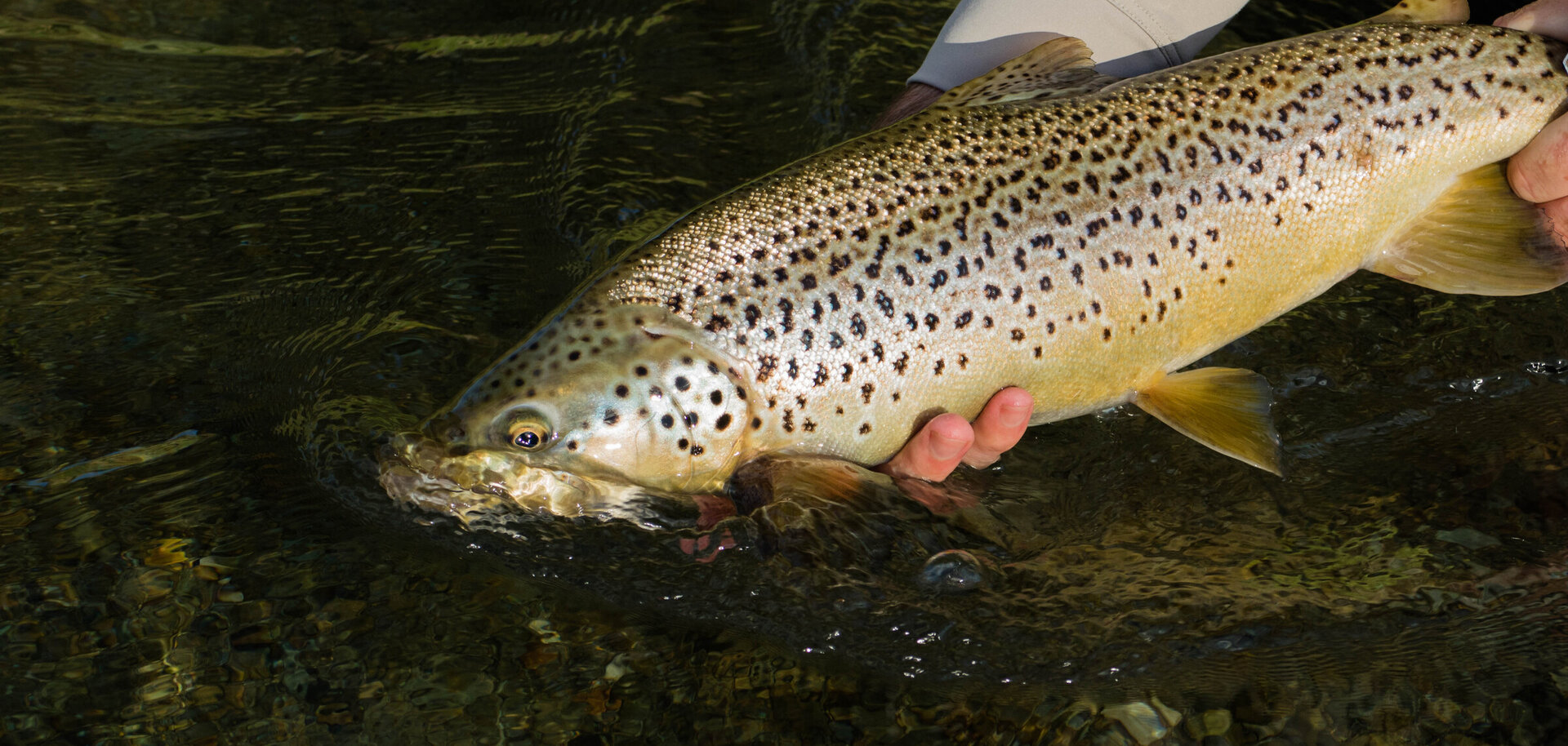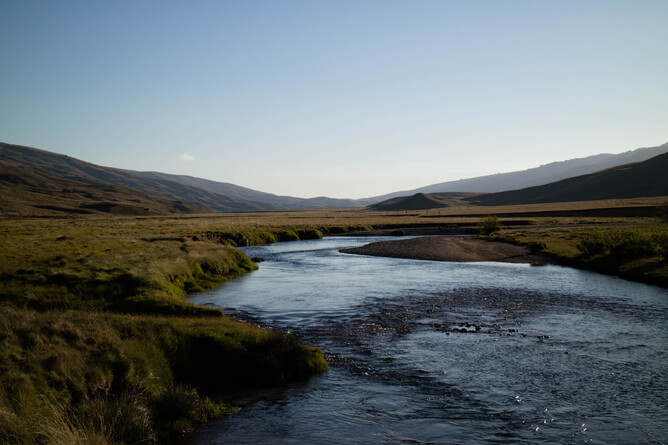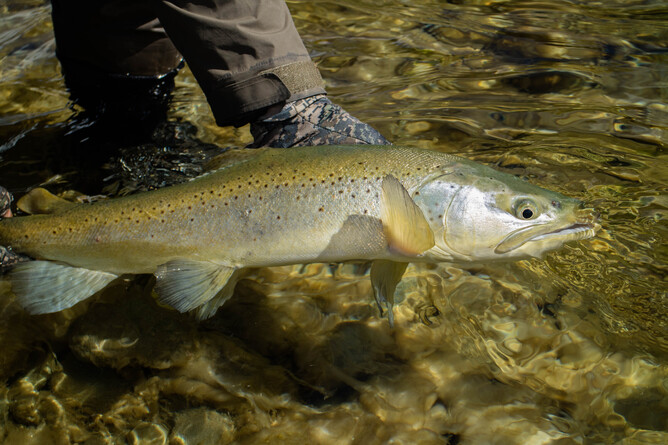Areas to target feeding trout on NZ rivers
You will find trout in places where food sources are abundant, and the living is easy.
Here are some insights, so you have an easier time catching them.
Where trout feed
Focus on areas with a structure like a rock where the current is diverting the flow, trout love to sit in the softer water, only swinging out to intercept food. That's how they get so big here. By being lazy, it always comes down to energy expended vs. energy consumption.
Other areas of interest will be the seams between slow and fast currents. These are not always obvious, try focusing on the colour of the riverbed, there will usually be a distinct line between dark algae-covered stones and lighter coloured stones where the current is faster, causing the stones to remain clean. Running nymphs along colour changes and structural changes where boulders met stones, will pick up fish. Always look closely at any white rock in the river. Experience has taught me that these are favoured lies and my explanation is that the trout are using them as a spotter board for nymphs just like we do when white baiting. Interesting?
Things to consider when locating feeding trout:
Structure
A lot of New Zealand rivers generally have resident fish that will stay in the same pool or section of the river their whole lives, only travelling to spawn. I have caught the same fish in the same location many a time over the years. This is due to particular parts of rivers that maintain their same structure over a long time. Look for long-standing trees, bedrock, and stable banks. These places provide an ideal home for large Trout as they can withstand significant weather events such as floods. Such places will also accommodate consistent food sources for Trout.
Side creeks
Side creeks or where braided sections of the river met, can concentrate food sources into one easy feeding lane for the trout gorge themselves on, such places you may find fish lined up. Small mountainous side creeks and springs also provided a fresh source of cold water which trout love in low summertime flows
Changes in depth
Changes in depth are also good places to focus on.
Where a riffle meets a pool known as a drop-off, Trout love these spots as they can feed on rising nymphs without the danger of being exposed in shallow water. At these locations, the water is more oxygenated, so in low summertime flows, they are ideal areas for Trout to feed when the water gets warmer.
Riffles
A shallow rocky part of a stream where the water flows brokenly can be a great place to find feeding fish, especially in the afternoon as hatches occur, Mayflies and caddis find it easier to break through the surface tension of the water in such places. Trout key into this and move into very shallow water for an easy snack. This is great for us angler as it provides relatively easy chances at big wily browns.
Once again, the broken water provides oxygen, so you'll often find wiling Trout here in on warm summer afternoons.
Backwaters
Backwaters are like the buffet of trout food, as you can have still water insect hatching, river currents bringing staple food sources all to one hot spot along with terrestrial life in the summertime. Trout are opportunistic feeders and will even eat frogs in these places along with water boatman, damsel nymphs and midge pupa. Catching these fish requires are more of an ambush approach as it is a Stillwater, in which the fish will be cruising and hunting. Stop, observe their beat, and set a trap.
Tail outs
Tail outs of long runs where the water is glassy smooth is a great place to target fish if there has been a good hatch the night before.
Often lowland river with high numbers of mayflies, you'll have spent spinners returning to lay their eggs on the water the night prior. They are easy targets for Trout as they are spent and lay motionlessly on the water's surface — a great way to get fish on the dry fly early in the morning.
These are just small snippets of the aspects a day's guided fly fishing.
If this has helped, please get in touch and I will be happy to help you develop from a fisherman to an angler.
Tightlines




